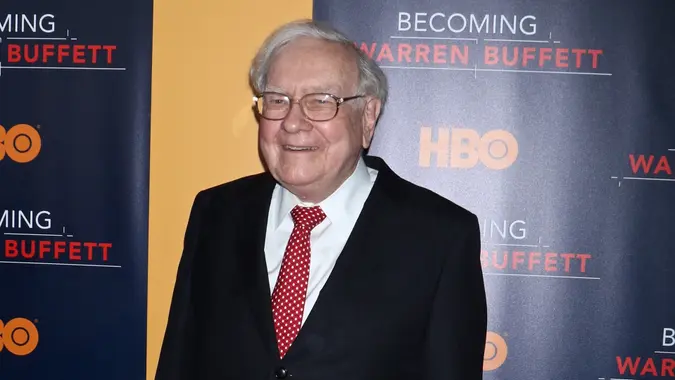6 Money Moves Wealthy People Always Make Before New Year’s

Commitment to Our Readers
GOBankingRates' editorial team is committed to bringing you unbiased reviews and information. We use data-driven methodologies to evaluate financial products and services - our reviews and ratings are not influenced by advertisers. You can read more about our editorial guidelines and our products and services review methodology.

20 Years
Helping You Live Richer

Reviewed
by Experts

Trusted by
Millions of Readers
While the poor and middle class might be stressing about how to afford upcoming holiday expenses like gifts and celebrations, wealthy Americans are planning ahead right now for a prosperous 2026. And experts say a large part of that involves tax planning.
But tax planning isn’t only for the wealthy. If you have any investments or are planning for retirement, you should also consider these year-end money moves suggested by experts.
Year-End Tax Planning
“Year-end is the moment for savvy investors to sharpen their after-tax outcomes before the calendar resets,” said Bill Harris, CEO and founder of Evergreen Wealth.
This is especially important heading into 2026, as President Trump’s One Big Beautiful Bill Act extended provisions of the 2017 Tax Cuts and Jobs Act most favorable to those in higher tax brackets.
“High-income earners in the US should proactively conduct year-end tax planning to optimize their 2025 liabilities,” said Brian Gaister, co-founder and CEO of Pennington Partners, a multi-family office with around $4B in AUM. “Effective planning can result in significant tax savings and optimal positioning for future years.”
Tax-Loss Harvesting
Tax loss harvesting involves selling investments at a loss to offset capital gains. Harris called it “your last chance to impact the 2025 tax year.”
In preparing for next year, he suggested setting up an automated program to harvest losses daily, avoiding a year-end scramble. “If you’re a high-income taxpayer in a high-tax state, you can increase your cumulative after-tax return by 20% to 30% with automated daily tax loss harvesting,” he said.
Monish Verma of Vardhan Wealth Management added that you can carry forward losses to offset future gains or offset a gain this year with a loss from the past. “We want to know about those losses and gains so we can trim their portfolios before year-end,” he said.
Max Out Retirement and Health Savings Account Contributions
Whether you are one of the 24 million millionaires in the US, or fall solidly into the middle-class, if you’re working, you should be maxing out your contributions to your 401(k), IRA, health savings accounts and other pre-tax accounts.
“For 2025, 401(k) employee limits are $23,500 (plus $7,500 catch-up for 50+), and the IRA limit is $7,000,” Gaister said.
Consider Roth Conversions
Experts also recommended using Roth conversions for tax-free growth with no required minimum distributions after retirement. As an advanced strategy to bypass direct income limits, high-income earners should also consider the Backdoor Roth strategy: First transfer money into a traditional IRA and then convert the funds to a Roth IRA.
“Backdoor Roth strategies remain valuable for those above income thresholds,” Gaister said.
Use Donor-Advised Funds for Charitable Giving
For wealthy individuals and families, philanthropy should play a role not only in tax planning but also in forging a legacy. Verma said he often asks clients about their passion projects, which could turn into philanthropic endeavors.
“Then we start looking at opening a donor-advised account where we can gift appreciated assets after tax, so we can start filling their long-term philanthropy needs and getting a tax break before the end of the year,” he said.
“Contributing appreciated securities to a donor-advised fund is one of the smartest year-end moves,” Harris agreed. “You can avoid capital gains, reduce your taxable income and let funds grow tax-free until you’re ready to donate.”
Review Entity Structures and Tax Strategies for Businesses
The vast majority (88%) of millionaires own businesses, according to Forbes. Year-end financial planning for wealthy entrepreneurs extends beyond their personal income taxes. Gaister recommended looking at specific deductions for business owners available today under current tax law, such as pass-through deductions, Section 179 expensing and 100% bonus depreciation.
“Review entity structures (LLC, S-Corp, etc.) for ongoing business and estate tax gains, particularly given the extended window of favorable rules and deduction limits,” he said.
He noted that real estate investors should consider opportunity-zone investments for capital gain deferral and exclusion advantage.
Financial Planning: Not ‘One-and-Done’
Most importantly, wealthy Americans typically don’t scramble at year-end to find ways to keep more of what they make. They don’t leave financial planning until the last minute.
“If a client’s not getting at least a quarterly conversation, a check-in, they really need to have a heart-to-heart with their financial advisor,” Verma said. “We can’t control the stock market. We can’t control the economy. What we can control is our cadence for communicating with our clients.”
Since financial situations may change throughout the year, it’s especially important to have that pre-December 31 check-in and review.
“Consult with a tax advisor to lock in gifting, trust and business strategies most relevant to your situation,” Gaister said.
 Written by
Written by  Edited by
Edited by 

























